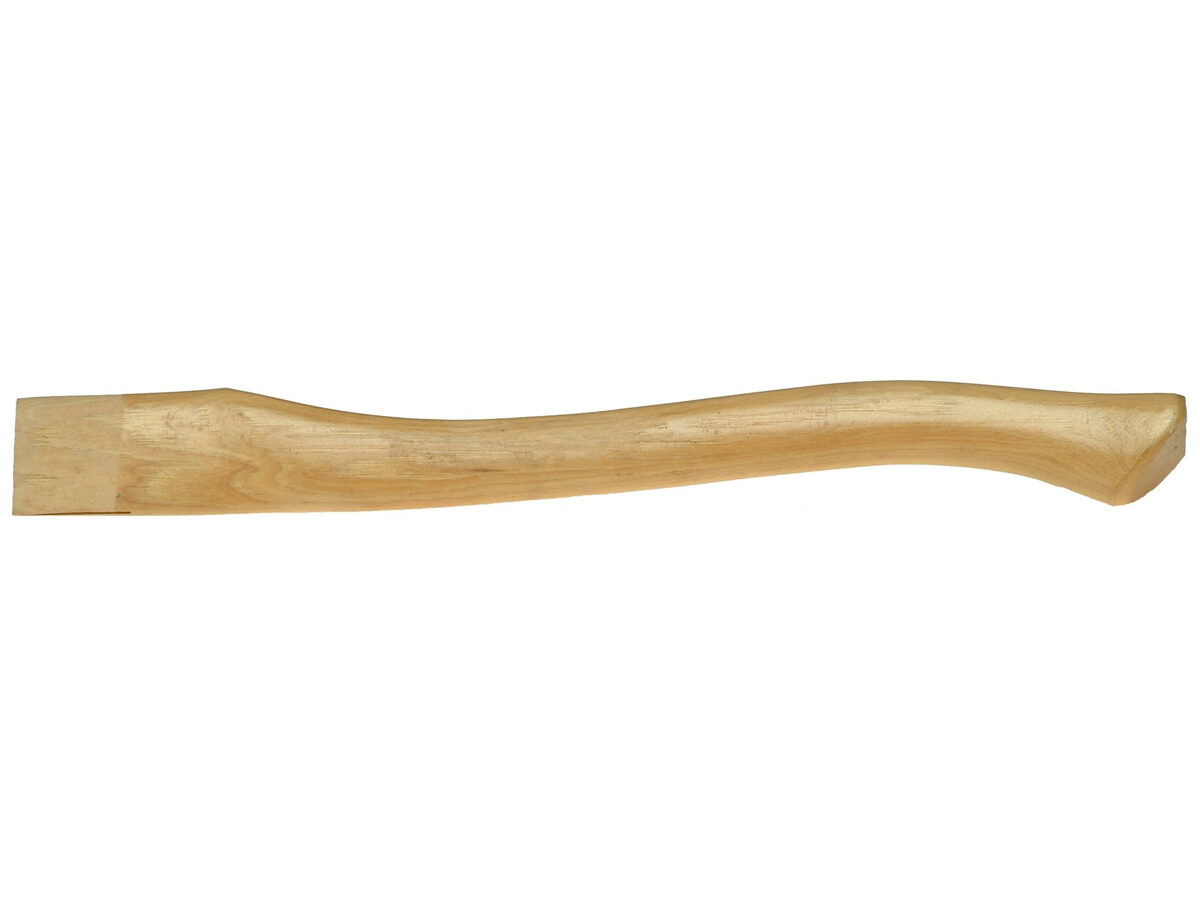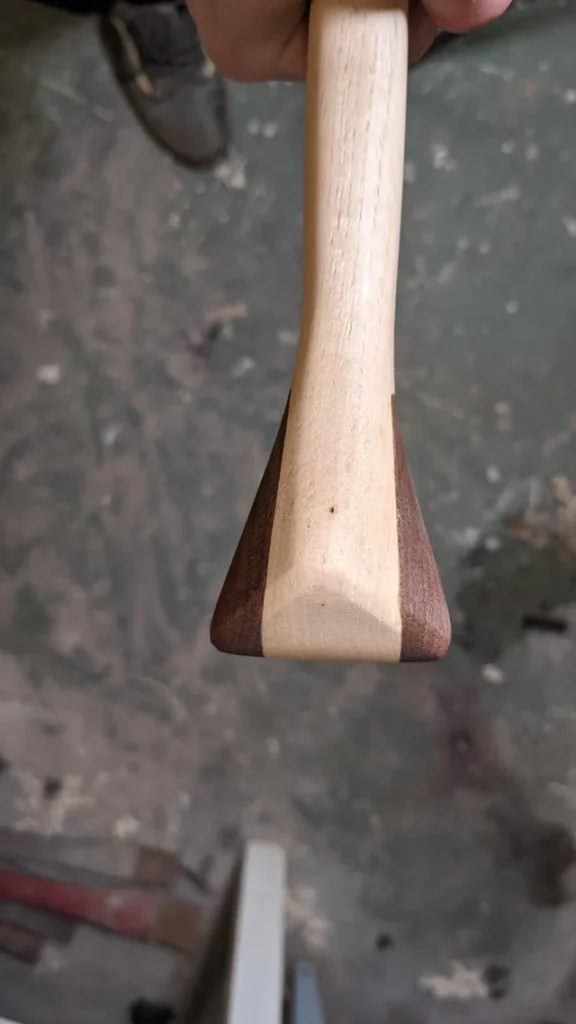Axe handle patterns refer to the specific shape and design of an axe handle, which can vary depending on the type and purpose of the axe. Common patterns include the straight handle, curved or fawn’s foot handle, and the knobbed or swell-end handle, each providing different grip, leverage, and control.
One often overlooked yet crucial aspect of an axe’s design is its handle pattern. The handle pattern can significantly influence the user’s comfort, control, and efficiency while using the tool. I will delve into axe handle patterns in this article, exploring their unique characteristics, advantages, and disadvantages.
Table of Contents
1. Straight Handle
A straight handle is one of the most common and basic patterns. It is a simple, straight design that is easy to grip and provides good leverage for chopping and splitting tasks. It’s often found on smaller axes and hatchets.
Suited For:
- Hatchets
- Small camping axes
- General-purpose axes
Pros:
- Simple and easy to manufacture.
- It provides good leverage for chopping and splitting tasks.
- Easy to grip and control for most users.
Cons:
- It lacks the ergonomic benefits of other patterns.
- It is less comfortable to use for extended periods.

2. Fawn’s Foot
The Fawn’s Foot pattern features a gentle curve at the base of the handle, similar to a deer’s foot. This design provides a comfortable grip and prevents the axe from slipping out of your hand during use.
Suited For:
- Carving axes
- General-purpose axes
Pros:
- Comfortable grip due to the curved end.
- It helps prevent the axe from slipping out of your hand.
Cons:
- Not as versatile as other handle patterns.
- Doesn’t provide as much leverage as other designs.

3. Curved Handle
A curved handle has a slight curve throughout the entire handle, providing better ergonomics and increased leverage. This pattern is often found on larger splitting axes and mauls, allowing the user to generate more power with each swing.
Suited For:
- Splitting axes
- Mauls
- Felling axes
Pros:
- The ergonomic design reduces hand and wrist strain.
- It provides increased leverage for more powerful swings.
- It is often found on larger axes for improved efficiency.
Cons:
- It is more difficult to manufacture and maintain.
- Not as well-suited for precision tasks or fine woodworking.

4. S-shaped Handle
The S-shaped handle features two curves, one at the top and another at the base of the handle. This design allows for a more comfortable grip and better control during use. It is often found on Scandinavian axes and some American felling axes.
Suited For:
- Scandinavian axes
- Some American felling axes
- Carving axes
Pros:
- Comfortable grip and better control during use.
- Well-suited for felling and carving.
Cons:
- It is not as common, so you may find replacing it harder.
- It is more challenging to manufacture.

5. Pistol Grip
The Pistol Grip pattern has a pronounced curve at the base of the handle, similar to the grip of a pistol. This design helps the user maintain a secure grip on the axe and reduces the risk of the handle slipping during use.
Suited For:
- Bushcraft axes
- General-purpose axes
Pros:
- Provides a secure and comfortable grip.
- Reduces the risk of the handle slipping during use.
Cons:
- Not as versatile as other handle patterns.
- It does not provide as much leverage as other designs.

6. Swell Knob
A swell knob handle features a flared end that provides additional grip and prevents the axe from slipping out of the user’s hand. This design is often found on American felling axes and some European models.
Suited For:
- American felling axes
- Some European felling axes
Pros:
- Offers a secure grip due to the flared end.
- Reduces the risk of the axe slipping out of your hand.
Cons:
- It is more challenging to manufacture.
- It is not as comfortable for some users, especially during prolonged use.

7. Tapered Handle
A tapered handle gradually narrows from the top of the handle to the base. This design provides a more comfortable grip for the user and is found in various axe types.
Suited For:
- Scandinavian axes
- General-purpose axes
- Splitting axes
Pros:
- Comfortable grip due to the gradual narrowing.
- It can be found in various axe types.
Cons:
- It does not provide as much leverage as other designs.
- It is more challenging to manufacture and maintain.

Conclusion
The variety of axe handle patterns available on the market is a testament to axe users’ diverse needs and preferences. From the simple straight handle to the ergonomically designed curved handle or the secure grip provided by the swell knob, each pattern has unique advantages and disadvantages that cater to specific uses and comfort levels.
When choosing an axe, it is crucial to consider the head design and intended use and the handle pattern that best suits your requirements and preferences.
Remember that there is no one-size-fits-all solution for axe handle patterns, as each person’s grip, strength, and technique may vary. The key is to experiment with different patterns to find the one that feels most comfortable and allows you to perform your tasks efficiently and safely.
